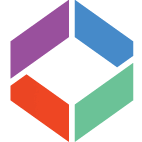Leveraging Data Science to Understand User Behavior

Data Science is an umbrella term used for multiple industries, such as data analytics, big data, business intelligence, data mining, machine learning & AI, and predictive analytics, and is clearly on an upward trend. Specifically, the big data and business analytics market was valued at $168.8 billion in 2018 and is forecasted to grow up to $274.3 billion by 2022 at a CAGR of 13.2%, according to Market Reports World.
The surge in spending for data science solutions, talent within the industry, and successful implementations demonstrate that companies understand the tremendous impact data can have on business performance.
As business interactions around the world become increasingly digitized, massive amounts of data are created and can be evaluated through predictive analytics tools to help companies gain a better understanding of market dynamics and underlying trends. With this knowledge, companies can then uncover the needs and expectations of their customers, and ultimately improve the end-user experience.
Therefore, it is no surprise that predictive models rank as one of the top big data technology trends around the world. The value data science can provide for businesses today is unprecedented.
However, even though leveraging data is at the heart of many businesses today, data alone can not provide all of the answers organizations need. Companies require insights and actionable paths they can take to optimize and adjust their business for maximum results.
Impact of Data Science & Global Utilization
The rise of data science has helped analysts and digital teams at large become real-life wizards who gather data at an unparalleled pace, validate its accuracy, assess its meaning, generate insights, formulate actionable plans, and deliver incredible results. Companies all over the world have realized that this isn’t necessarily magic, but rather a transformation and process they need to adopt in order to stay competitive and maintain relevance in the digital age.
Data Science has provided solutions for many industries that have been struggling for a long time. For example, in retail, companies have completely revamped the way they interact with their customers by focusing on creating easier paths for purchasing and tailoring the experience to the needs of specific audiences. In the healthcare industry, data science has drastically reduced the time needed to develop new drugs and has streamlined the ability for patients to get professional help in remote areas.
Cities have also been forever changed by data science, with thousands of sensors embedded throughout our neighborhoods to optimize traffic, reduce crime rates, and improve the overall quality of life.
The Connection Between Data Science & User Behavior
A business may experience thousands of digital interactions with a single user across display, search, social, and on the site or app. These interactions take place on multiple devices, such as mobile, desktop, tablet, or wearable devices.
Initially, analyzing immense data volumes associated with each individual user to make relevant connections was no easy task. However, with the rise of AI and machine learning algorithms, analyzing data points from multiple data sources to create a holistic view of users is now realistic and attainable.
User behavior, including actions, what they search for, and how they interact with digital properties as a whole, can now be collected and transformed into specific customer segments. These insights ultimately lead to personalized user journeys to gain a comprehensive understanding of user behavior, develop targeted advertising, and improve digital experiences.
For retailers today, recommendation engines are among the most used tools because they can give businesses an in-depth look into the interests and goals of their customers and help predict trends. The recommendation engines are complex machine learning components and deep learning algorithms designed to keep a track record of customer segments, analyze behavioral patterns based on this data, and improve the digital experience for customers.
Why You Need to Understand User Behavior
Banks and retailers were among the first industries that realized understanding behavioral patterns of their clients can lead to incredible breakthroughs.
For example, with data science, banks can manage their resources efficiently and make smart decisions through customer segmentation, fraud detection, customer data, and risk modeling via real-time predictive analytics.
By leveraging data science, banks can also have a holistic view of their customer lifetime value as well as part of specific profiling patterns. This, alongside behavioral pattern analysis, allows banks to make accurate predictions about their clients.
In time, customer profiling became one of the top data science applications in finance. By leveraging data they collect from all sources linked to their customers, financial institutions have managed to assess risk and liabilities associated with specific clients before even working with them.
Cognetik: Taking Behavior to the Next Level with Data Science
Our valued partnership with Contentsquare helps numerous industries capture intricate behavior patterns of consumers, provide sophisticated segmentation, and improve digital properties through the power of data.
Data science takes data analysis to the next level, allowing businesses to predict what users might do, augment the user journey, and provide incredible insights that are unmatched.
As an analytics and data science company, Cognetik helps the Fortune 1000 go above and beyond the standard recipe for making data science a reality. Our team of experts can guide you through the process, analyze what would work best for your business, and help you implement it in order to gain a holistic view of your users and improve your digital properties.
Adobe Stock, via titima157



